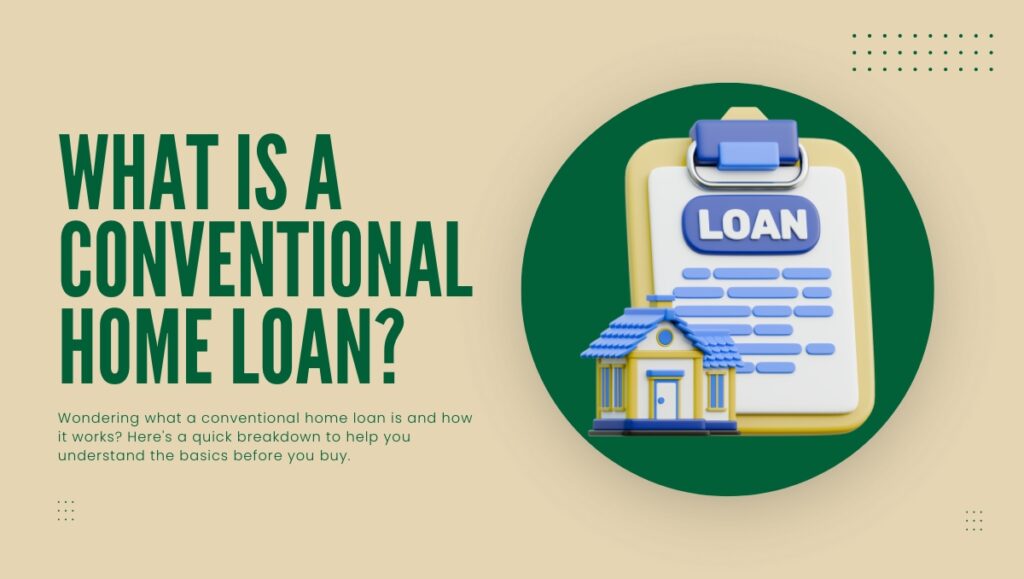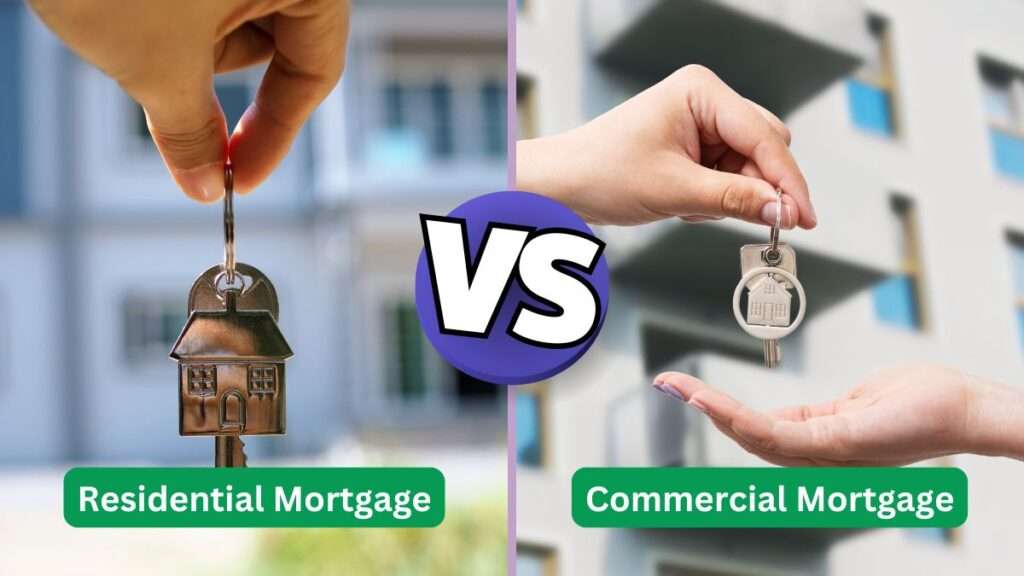If you’re thinking about buying a home in Canada, you might be asking what is a conventional home loan? It’s simply a home loan that isn’t backed by the government.
With a steady income, good credit and at least twenty percent down, you could qualify. The best part is you don’t have to pay for mortgage insurance, so you save money every month.
Conventional loans give you more flexibility with rates and terms, and if your finances are solid, you may get a better overall deal.
Whether you’re buying your first place, moving into something bigger or refinancing, knowing how this type of loan works will help you understand how much you can borrow, what your monthly payments will be and how much interest you’ll pay in total.
If you want to keep things simple and avoid extra costs, a conventional loan could be the right choice. At AJP Mortgage, we’ll walk you through each step and help you find the option that fits your goals.
What is a Conventional Home Loan?
A conventional home loan is a mortgage that is not backed by government insurance (like CMHC in Canada). This type of loan follows standard lending guidelines and usually requires a minimum down payment of 20 percent to avoid default insurance.
In short, it’s a straightforward, no-frills mortgage option—ideal if you have good credit, stable income, and enough savings for a larger down payment.
Core Features
Interest Rate Choices: Fixed or variable
Defined Terms: Common terms are 1, 3, or 5 years
Amortization Period: Typically 25 years
Approval Criteria: Based on income, credit history, debt, and assets
Comparison with Other Mortgage Types
Not sure how a conventional home loan stacks up against other mortgage types? Here’s a quick comparison to help you decide what fits best.
| Feature | Conventional Loan | Insured Loan (High-Ratio) | Private/Alternative Lending |
| Minimum Down Payment | 20% or more | As low as 5% | Varies, often 15–30% |
| Mortgage Default Insurance | Not required | Mandatory | Not applicable |
| Approval Criteria | Standard lender rules | Standard + CMHC rules | More flexible but costlier |
| Interest Rates | Competitive | May be slightly lower | Usually higher |
Eligibility and Qualification Requirements
To get a mortgage, you need to show you can afford it. Lenders look at your money, credit, and job. Here’s what they check for.
Minimum Down Payment and Loan-to-Value Ratio
To qualify as a conventional mortgage:
LTV is calculated as:
Mortgage amount ÷ Property value
Credit Requirements
A good credit score is key. Most lenders look for 680+
Strong credit history helps secure better interest rates
Income and Debt Service Ratios
Lenders use two main ratios:
Gross Debt Service (GDS): Should be below 35%
Total Debt Service (TDS): Should be under 42%
These measure how much of your income goes toward housing and all debts.
Documentation Needed
You’ll need to provide:
Government-issued ID and proof of residence
Pay stubs, T4s, or tax returns (for self-employed)
Bank statements, RRSP or TFSA balances
Purchase agreement or details about the property
Other Factors Lenders Consider
Interest Rate Options and Their Implications
Your mortgage rate can stay the same or go up and down. This affects how much you pay each month. Let’s look at both options and what they mean for you.
Fixed Rate Feature
A fixed-rate mortgage means your interest rate stays the same for the entire term.
Pros
Common fixed terms: 1, 3, 5, or even 10 years
Variable Rate Feature
A variable rate mortgage changes based on your lender’s prime rate.
Pros
Risks
Choosing Between Fixed and Variable
Think about:
Your comfort with risk
Market trends and rate forecasts
Your monthly budget and cash flow needs
Rate holds or locks can protect you during the home buying process.
Loan Term and Amortization Details
When you get a mortgage, you choose how long it lasts and how long you’ll take to pay it off. This affects your monthly payments and how much interest you pay. Let’s break it down in a simple way.
Term vs Amortization Period
Term: Contract length before renewal (e.g. 5 years)
Amortization: Time to repay loan fully (usually 25 years)
Common Options in Canada
Terms: 1 to 10 years
Amortization: Typically up to 25 years (30 with some lenders)
Effects on Payment and Interest
Shorter amortization = higher payments, less interest overall
Longer amortization = lower payments, more total interest
Renewal Considerations
At the end of the term:
Renew with current lender or switch
Shop around for better rates or change amortization strategy
Costs and Fees Associated with Conventional Home Loans
Getting a mortgage comes with extra costs, not just your monthly payments. You may need to pay for things like legal fees, appraisals, or interest. Let’s look at what these costs are so there are no surprises.
Interest Costs Over Term
Interest is the biggest cost. It depends on:
The rate (fixed or variable)
The size of the mortgage
The amortization length
Upfront Fees
Typical upfront costs include:
Appraisal fee: $300–$500
Legal fees: $1,000–$2,000
Setup/application fees: Some lenders may charge these
Ongoing Fees
Admin/service fees: Vary by lender
Prepayment penalties: If you break your term early
Insurance and Other Requirements
No default insurance with 20%+ down
Title insurance and home insurance are required
Comparing Total Cost Scenarios
Example
$500,000 home with $100,000 down payment (20%)
5-year fixed @ 5% = ~$2,326/month
5-year variable @ 4.5% = ~$2,241/month
Over 5 years, the difference in interest can be thousands.
Application Process Step by Step
Getting a mortgage has a few steps, but it’s easier when you know what to expect. From checking your credit to signing the final papers, each step matters. Let’s go through the process one step at a time.
Preparing Before Application
Check your credit report
Save for down payment and closing costs
Gather income and asset documentation
Pre-Approval Stage
Getting pre-approved:
Helps define your budget
Makes you a stronger buyer in sellers’ eyes
Choosing a Lender or Broker
Direct lenders may offer solid rates
Mortgage brokers like AJP Mortgage compare multiple options, often saving time and money
Submitting Full Application
Be honest and accurate
Submit all required paperwork quickly
Schedule an appraisal if needed
Approval and Conditions
Once approved:
You’ll receive a conditional commitment
Meet any remaining conditions (income proof, appraisal) to proceed
Closing Process
Review the closing disclosure
Sign mortgage documents
Mortgage is registered and funds are released
Comparison with Insured Mortgage Options
Some mortgages need insurance, some don’t. It depends on how much money you put down. Let’s see the difference and when each one works best.
Insured Mortgage Basics
Needed if your down payment is less than 20%
Comes with mortgage default insurance
Premium cost: 2.8%–4% of the mortgage amount
When Conventional Is Preferable
Avoids insurance premiums
Simpler cost structure and less lender scrutiny
When Insured Mortgage May Be Needed
For first-time buyers
When saving 20% is not possible
Moving from Insured to Conventional
As you pay down your mortgage or if property value increases
Refinance once equity reaches 20%
Benefits of a Conventional Home Loan
A conventional home loan is a top pick for many buyers in Canada. Here are key reasons people choose this option:
No extra insurance with 20 percent down
If you can save and put down at least 20 percent of the home price you avoid mortgage default insurance. That means less cost up front and thousands saved over the life of your loan.
Lower overall cost over time
Without insurance premiums and with a good interest rate you keep monthly payments manageable. Over many years this adds up to real savings.
Smooth approval when you qualify
With stable income, a solid credit record, and enough savings for a down payment, approval tends to be faster and clearer. Lenders appreciate borrowers who meet those basics.
Better interest rates for strong credit
A higher credit score often leads to a lower rate. That translates into paying less interest across your mortgage term.
Freedom to adjust later
You can refinance, renew, or move to a different lender as needed. There are no extra restrictions so you stay in control as your situation changes.
Risks and Considerations
While a conventional home loan has great benefits, there are a few things to think about:
You need a bigger down payment
To avoid mortgage insurance, you’ll need to put down at least 20 percent. Saving that much can take time and effort.
It can reduce your cash cushion
Using a large amount of savings for the down payment might leave you with less money for other needs like repairs, bills, or daily expenses.
You need strong credit and steady income
Lenders want to see good credit and reliable income. If either is low, it may be harder to qualify or get the best rate.
Home values can drop
If the market goes down, your home’s value might fall too. That could affect your equity, especially in the first few years.
Keep some savings aside
Try not to use all your money for the down payment. It’s important to have a separate emergency fund for anything unexpected.
Role of a Mortgage Broker Like AJP Mortgage
A mortgage broker helps you find the right loan. AJP Mortgage does the searching, explains your options, and helps you every step of the way. It makes the process easier and less stressful.
How a Broker Fits In
Matches you with top lenders for conventional loans
Helps with rate holds, pre-approvals, and paperwork
Guides you through every step
Borrower Benefits
Saves time and hassle
Access to exclusive rates or features
Personalized advice on mortgage structure
Support After Funding
Ongoing rate monitoring
Help with refinancing or renewing
Tips on faster repayment
Tips and Best Practices for Borrowers
Getting a mortgage is a big step, so it helps to plan ahead. Saving early, keeping good credit, and knowing your options can make things smoother. Here are some easy tips to help you do it right.
Total Cost Comparison
Want to know which mortgage option costs less in the long run? Here’s a simple total cost comparison to make it clear.
| Term | Amortization | Monthly Payment | Total Interest Over 5 Years |
| 5yr Fixed @ 5% | 25 yrs | $2,326 | ~$63,600 |
| 5yr Variable @ 4.5% | 25 yrs | $2,241 | ~$60,400 |
Regulatory and Market Considerations
Mortgage rules can change, and so can interest rates. These changes affect how easy it is to get a loan and what it costs. Let’s look at how rules and the market can shape your mortgage choices.
Canadian Rules
OSFI oversees conventional mortgage rules
Stress tests may apply even for uninsured loans
Rate Environment
Rising rates make fixed mortgages more popular
Lower rates may favour variable options
Market Trends
Larger down payments are harder to save in big cities
Families often lean on savings, gifts, or equity
Future Outlook
Regulations may tighten
Home prices and interest rates may shift, affecting your strategy
Preparing for Future Needs and Renewal
Your mortgage doesn’t end when the first term is done. You’ll need to renew or make changes later. Planning ahead helps you stay ready, save money, and make smart choices. Let’s see how to prepare.
Consider biweekly payments to reduce principal
Make lump-sum payments to build equity
Monitor credit and income in case you need to renew or refinance
Reconnect with your broker before renewal
Conclusion and Next Steps
Now you know what a conventional home loan is and how it works. The next step is simple: save money, check your credit, and get advice. A broker like AJP Mortgage can help you take the right steps toward buying your home.
Recap
A conventional mortgage in Canada is ideal if you have:
20% down
Strong credit and stable income
A goal to avoid default insurance and save on costs
Key Takeaways
It offers cost savings and simplicity
You’ll need more upfront but have more control
Good for long-term homeownership planning
What to Do Now
Start budgeting for your down payment
Pull your credit report
Get pre-approved and speak with a broker like AJP Mortgage
Final Advice
With proper planning, a conventional home loan can be a smart, affordable way to own a home in Canada. Talk to our mortgage experts early to ensure you’re on the right path.
Common Questions
Does Conventional Always Mean Best Rate?
Not necessarily—rate depends on your credit, income, and lender choice.
Can I Switch from Insured to Conventional?
Yes, once you reach 20% equity.
Is a Conventional Loan Harder to Get?
Only if you lack a large down payment. Otherwise, it may be easier.
Is Pre-Approval Different?
Not really—just shows you’re less risky to the lender with 20% down.


